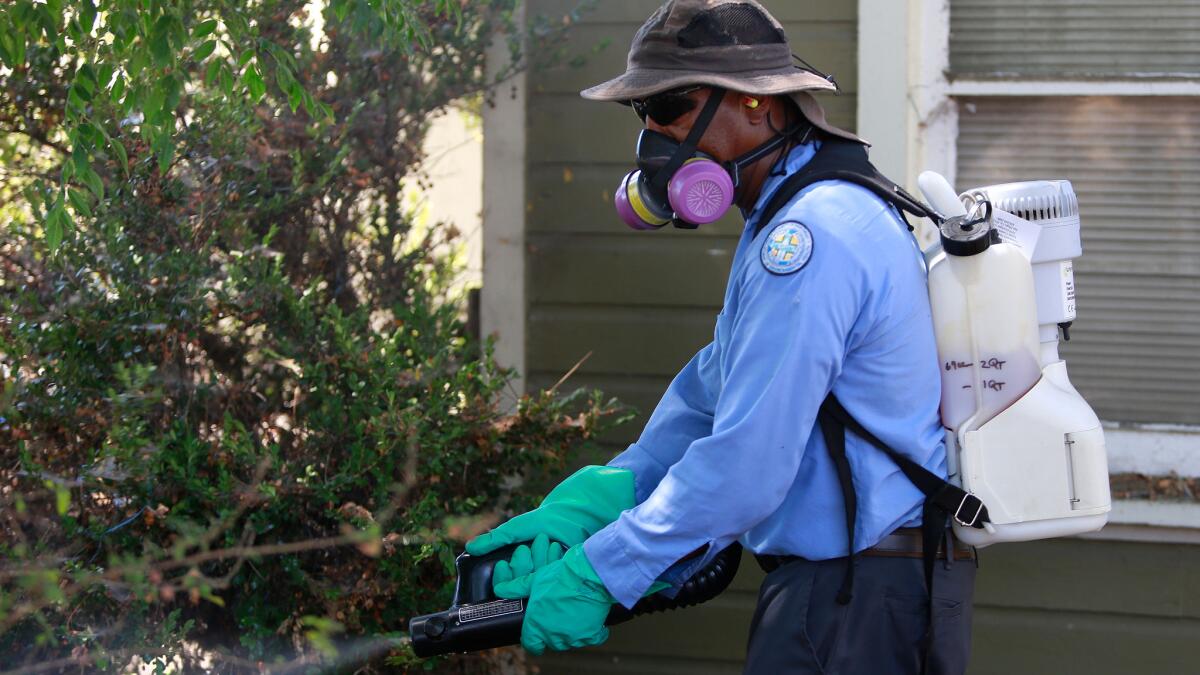San Diego neighborhood sprayed with insecticide to fight Zika virus

- Share via
Wearing protective masks and backpacks that released bursts of insecticide fog into the air, teams of county workers moved through two blocks of San Diego’s Mount Hope neighborhood Tuesday, targeting mosquitoes capable of carrying the Zika virus.
It was the second time such treatment has been applied in the region; the first was in mid-August in nearby South Park. Similar operations have unfolded in neighborhoods across the nation as health officials attempt to prevent mosquitoes from becoming infected with Zika and then transmitting it to people, particularly pregnant women because the virus can cause neurological defects in newborns.
Localized transmission has already occurred in Florida. Other areas of the U.S., including San Diego County, have reported cases involving people who traveled to countries with active Zika infestations and got infected.
Tuesday’s spraying came with some pushback. Several Mount Hope residents posted signs forbidding treatment of their properties, citing concerns that the insecticide might affect pets and organic gardens. There was also a small group of protesters who arrived bearing signs with slogans such as “pesticides are poison, stop spraying us.”
Critics of anti-Zika spraying point to places like South Carolina, where aerial spraying using an insecticide called naled reportedly killed about 2.5 million honeybees at an apiary east of Charleston.
The treatments in San Diego use a different pesticide that dissipates within 20 minutes of application, said Rebecca Lafreniere, deputy director of the county’s environmental health department. And unlike the South Carolina situation, she said, local crews use special backpack-sized sprayers generating micron-sized water droplets that can be directed at specific features on a property where Aedes mosquitoes might rest, such as on a hedge or large flowering bush.
“We have a very targeted application. It’s not these big clouds that fill the whole neighborhood,” Lafreniere said.
She added that county workers took extra precautions to locate any backyard beehives in the neighborhood before starting treatment. Had there been any, she said, their owners would have been notified in advance. The county also works with a local beehive registry to determine if alerts should be issued in an affected neighborhood.
“We did find one that was about a mile away that we found in the registry, and we went ahead and notified them,” Lafreniere said.
ALSO
Ex-O.C. court clerk accused of fixing hundreds of criminal and traffic cases for bribes
More to Read
Sign up for Essential California
The most important California stories and recommendations in your inbox every morning.
You may occasionally receive promotional content from the Los Angeles Times.










